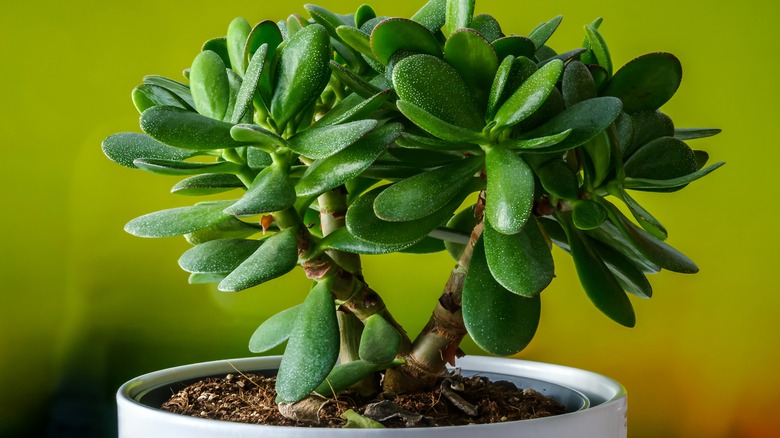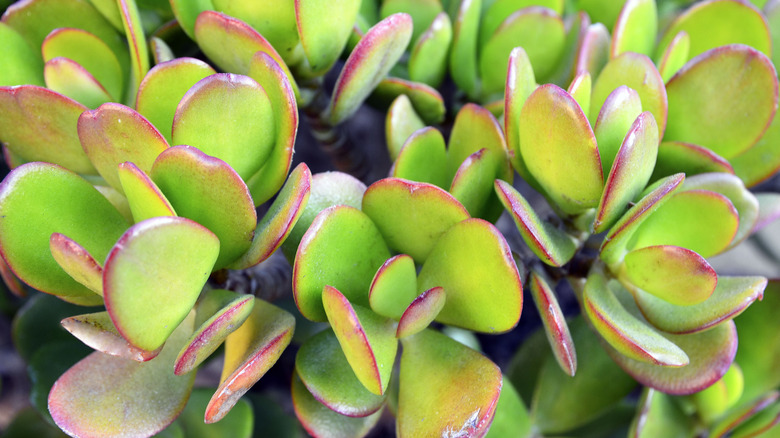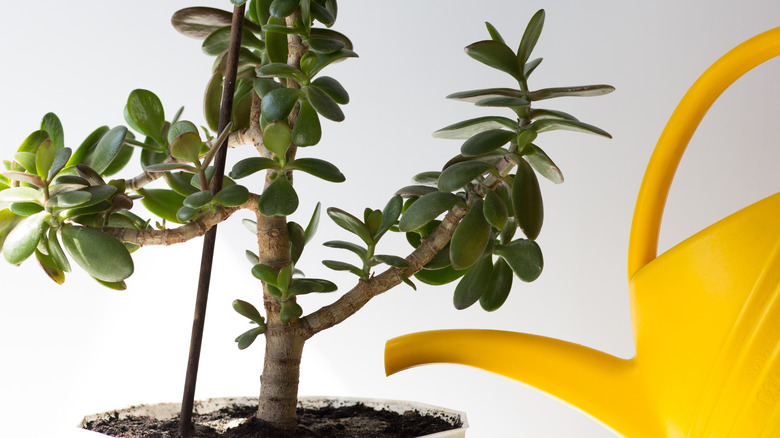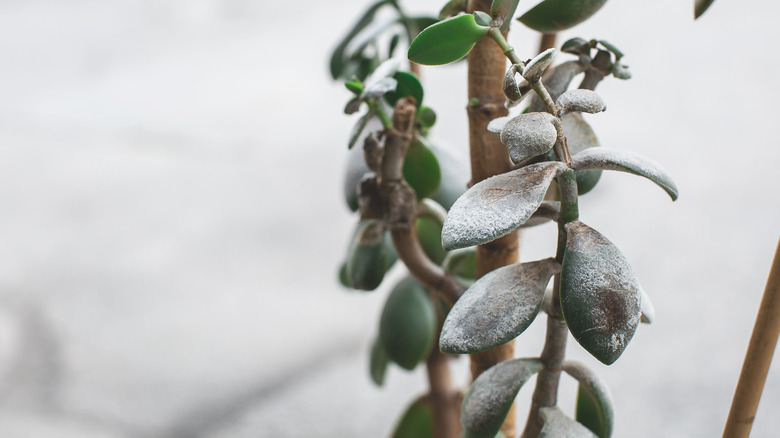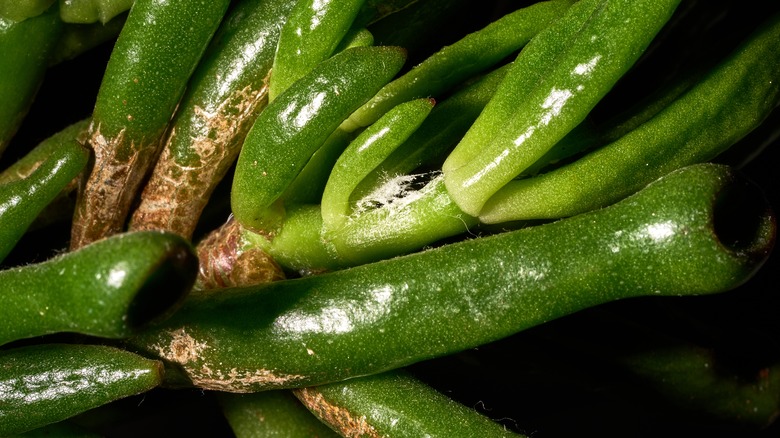What's The Best Way To Treat Black Spot On Jade Plants?
Succulents are common houseplants loved for their hands-free care and maintenance features. One of the most common indoor succulents is the Jade plant, also referred to as the Crassula ovata. Hailing from South Africa, this particular succulent features thick, oval, fleshy leaves and a distinct woody stem that looks like a small tree trunk. The jade plant makes an excellent indoor plant because of its relatively slow-growing nature and ability to thrive in spaces that restrict root growth, according to the University of Wisconsin-Madison Division of Extension.
Although quite tolerant to most conditions, the Crassula ovata plant is not entirely immune to every disease. In fact, one of the most common issues that plague this particular plant is the development of black spots on the fleshy leaves, which takes away from their ornamental value. So what causes the occurrence of these black spots? What do you do to make sure your jade plant is free from this problem in the future? To get the answers to these and more questions, read on!
How to tell if your jade plant has black spots
Naturally, a jade plant's leaves are oval, thick, and fleshy without blemishes. However, depending on the amount of sun your plant receives, the leaves could either be green or turn bright red on the tips. According to Your Indoor Herbs and Garden, one of the reasons for the change in colors on the leaves is the exposure to sunlight. When the plant doesn't get much sun, the leaves remain green; however, too much exposure is responsible for the leaves turning red at the tips. While this is true, you should be concerned when you notice unsightly black spots on the leaves of your jade plant.
More often than not, this indicates something wrong with the plant. It is also important to point out that the jade plant usually recovers if you address the root cause of the problem. The development of black spots on the leaves of your jade plant might be a result of different reasons. Therefore, it is important to look at some leading causes to find the best remedy depending on the specific cause; here are a few.
Incorrect watering
Jade plants, like most succulents, are adapted to hot and dry conditions. The jade plant thrives in a rocky environment with plenty of sunshine. So if you constantly supply your plant with more water than it requires, this becomes a problem over time. One of the problems associated with overwatering your jade plant is the formation of brown or dark spots on the leaves, which is edema. According to the University of California Agriculture and Natural Resources, edema is when there is unusual water retention of water on the leaves of plants. This happens when the water supply is greater than the rate of water loss through transpiration.
If the black spots on the leaves are caused by too much water supply, the good news is that it is easy to fix and save your plant. All you need to do is replicate the plant's ideal conditions by reducing the frequency of irrigating your plant. It is better to allow the soil or potting mix to dry between the watering periods. These plants can recover from the black spot problem if you get the routine watering right.
Bacteria or fungal disease
Another possible reason for the brown and dark spots on the leaves of your jade plant is the beginning of bacterial or fungal diseases. If the black spots are only located on the leaves' backside, it could indicate the black ring virus. Anthracnose is a fungal infection that rarely occurs on succulents but could be a cause for black spots on the leaves of your jade plant. This fungal disease is particularly prevalent in cool and humid environments, via Succulent Growing Tips.
The most effective way of dealing with the bacteria or fungi problem is cutting the affected parts, mentions Ready To DIY. However, this is only possible when the infection is still in its early stages and hasn't affected the entire plant. Also, sterilize your tools after pruning the infected plant to avoid spreading the disease to other plants. Other than that, you also need to find ways of reducing the humidity levels indoors. You could strategically place the plant near a window to provide it with more sunlight and allow indoor air circulation.
Insects
Other than having a bad watering routine, the infestation of insects is another popular cause of the black spots on the jade plant leaves. The Clemson University Cooperative Extension Service mentions that mealybugs can be a problem for the jade plant; however, spider mites and aphids can also cause damage to the leaves of your plant as well. Because mealybugs manifest as white cotton balls, they are easy to notice and get rid of.
Removing these bugs is recommended using cotton swabs soaked in alcohol, eliminating them and preventing further infestation. On the other hand, Spider mites are rather small and relatively difficult to see with the naked eye. However, you can remove as many as possible with your hands and wipe down the leaves with alcohol. The Clemson University Cooperative Extension Service also cautions against using insecticidal soap, which does more harm than good to the jade plant.
